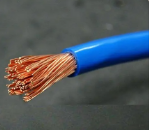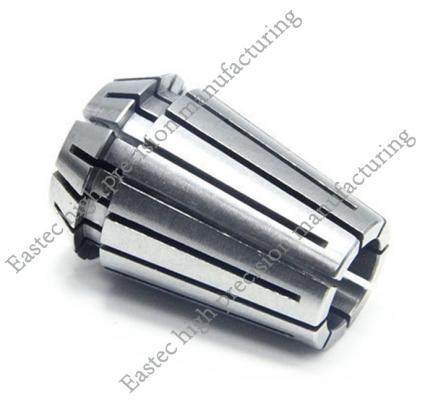
Aluminum alloy is an important industrial raw material. Due to its relatively low hardness and large coefficient of thermal expansion, it is prone to deformation during the machining of thin - walled and thin - sheet parts. Besides improving the performance of cutting tools and pre - treating with aging to eliminate the internal stress of the material, some measures can be taken from the perspective of processing technology to minimize the processing deformation of the material as much as possible.
Symmetric Machining Method
For aluminum alloy parts with a large machining allowance, to create better heat - dissipation conditions and reduce thermal deformation, it is necessary to avoid excessive heat concentration as much as possible. One way is to adopt symmetric machining. For example, for an aluminum alloy plate that is 90 mm thick and needs to be milled to 60 mm thick, if one side is milled and then immediately flipped to mill the other side, and each side is processed to the final size in one go, the continuous machining allowance is large, which will cause the problem of heat concentration. In this case, the flatness of the milled aluminum alloy plate can only reach 5 mm. If the symmetric machining method of feeding alternately on both sides is used, and each side is processed at least twice until the final size is reached, it is conducive to heat dissipation, and the flatness can be controlled within 0.3 mm.
Layer - by - layer Multiple Machining Method
When there are multiple cavities to be processed on an aluminum alloy plate - type part, if the method of processing one cavity after another is adopted, the cavity walls are likely to be deformed due to uneven stress. The best solution is to adopt the layer - by - layer multiple machining method, that is, process all cavities simultaneously, but not complete the processing in one go. Instead, divide it into several layers and process layer by layer to the required size. In this way, the part will be stressed more evenly, and the probability of deformation is relatively small.
Appropriate Selection of Cutting Parameters
Selecting appropriate cutting parameters can effectively reduce the cutting force and cutting heat during the cutting process. During machining, if the cutting parameters are too large, the cutting force in one pass will be too large, which is likely to cause part deformation and will also affect the rigidity of the machine tool spindle and the durability of the cutting tool. Among the various elements of cutting parameters, the depth of cut has the greatest impact on the cutting force. Reducing the depth of cut is beneficial to ensuring that the part does not deform, but it will reduce the processing efficiency at the same time. High - speed milling in CNC machining can solve this problem. Just reduce the depth of cut, increase the feed rate accordingly, and increase the rotational speed of the machine tool, and it is possible to reduce the cutting force while ensuring the processing efficiency.
Improvement of the Cutting Ability of the Cutting Tool
The material and geometric parameters of the cutting tool have an important impact on the cutting force and cutting heat. Correctly selecting the cutting tool is crucial for reducing part processing deformation.
① Rational Selection of Geometric Parameters of the Cutting Tool
- Rake Angle: Under the condition of maintaining the strength of the cutting edge, the rake angle should be appropriately larger. On the one hand, a sharp cutting edge can be ground, and on the other hand, cutting deformation can be reduced, chip removal can be made smooth, and thus the cutting force and cutting temperature can be reduced. Using a cutting tool with a negative rake angle should be avoided.
- Clearance Angle: The size of the clearance angle has a direct impact on the wear of the flank face and the quality of the machined surface. The cutting thickness is an important condition for selecting the clearance angle. During rough milling, due to the large feed rate, heavy cutting load, and high heat generation, good heat - dissipation conditions are required for the cutting tool. Therefore, the clearance angle should be selected smaller. During finish milling, a sharp cutting edge is required to reduce the friction between the flank face and the machined surface and reduce elastic deformation. Therefore, the clearance angle should be selected larger.
- Helix Angle: To make the milling process smooth and reduce the milling force, the helix angle should be selected as large as possible.
- Principal Cutting Edge Angle: Appropriately reducing the principal cutting edge angle can improve the heat - dissipation conditions and lower the average temperature in the processing area.
② Improvement of the Structure of the Cutting Tool
- Reduce the Number of Milling Cutter Teeth and Increase the Chip - holding Space: Since aluminum alloy materials have large plasticity and large cutting deformation during processing, a large chip - holding space is required. Therefore, the radius of the bottom of the chip - holding groove should be larger, and the number of milling cutter teeth should be smaller. For example, milling cutters with a diameter of less than φ20mm are preferably equipped with two teeth; milling cutters with a diameter of φ30 - 60mm are preferably equipped with three teeth to avoid the deformation of thin - walled aluminum alloy parts caused by chip clogging.
- Precision Grinding of Tooth Edges: The roughness value of the cutting edge of the tooth should be less than Ra = 0.4μm. Before using a new tool, gently grind the front and back of the tooth with a fine oilstone several times to remove the burrs and slight serrated patterns remaining from the tool sharpening. In this way, not only can the cutting heat be reduced, but also the cutting deformation is relatively small.
- Strict Control of the Tool Wear Standard: After the tool wears, the surface roughness value of the workpiece increases, the cutting temperature rises, and the workpiece deformation increases accordingly. Therefore, in addition to selecting a tool material with good wear resistance, the tool wear standard should not be greater than 0.2mm, otherwise, built - up edges are likely to occur. During cutting, the temperature of the workpiece generally should not exceed 100°C to prevent deformation.
Attention to the Feed Sequence
Rough machining and finish machining should adopt different feed sequences. Rough machining requires removing the excess material on the surface of the blank at the fastest cutting speed in the shortest time to form the geometric contour required for finish machining. Therefore, processing efficiency is emphasized, and the material removal rate per unit time is pursued. Up - milling should be used. Finish machining has higher requirements for machining accuracy and surface quality, emphasizing processing quality. Down - milling should be used. Since the cutting thickness of the tooth edge during down - milling gradually decreases from the maximum to zero, it can greatly reduce the work - hardening phenomenon and also has a certain inhibitory effect on the deformation of the part.
Secondary Clamping of Thin - walled Parts
When processing thin - walled aluminum alloy parts, the clamping force during clamping is also an important cause of deformation, which is difficult to avoid even if the machining accuracy is improved. To reduce the deformation of the workpiece caused by clamping, before finishing to the final size, loosen the clamped part to release the clamping force, allow the part to freely return to its original state, and then gently clamp it again. The action point of the secondary clamping is preferably on the support surface. The clamping force should act in the direction with good workpiece rigidity, and the size of the clamping force should be just enough to hold the workpiece without loosening. This requires high experience and feel from the operator. In this way, the clamping deformation of the processed part is relatively small.
Drilling - before - Milling Method
When processing parts with cavities, if the milling cutter is directly inserted into the part downward, due to insufficient chip - holding space of the milling cutter, chip removal will be blocked, resulting in a large amount of cutting heat accumulation in the part, expansion deformation, and even accidents such as tool chipping and breakage. The best method is to drill first and then mill, that is, first drill a tool hole with a drill bit whose size is not smaller than that of the milling cutter, and then use the milling cutter to reach into the tool hole to start milling. This can effectively solve the above - mentioned problems.





 Customer service 1
Customer service 1  Customer service 2
Customer service 2